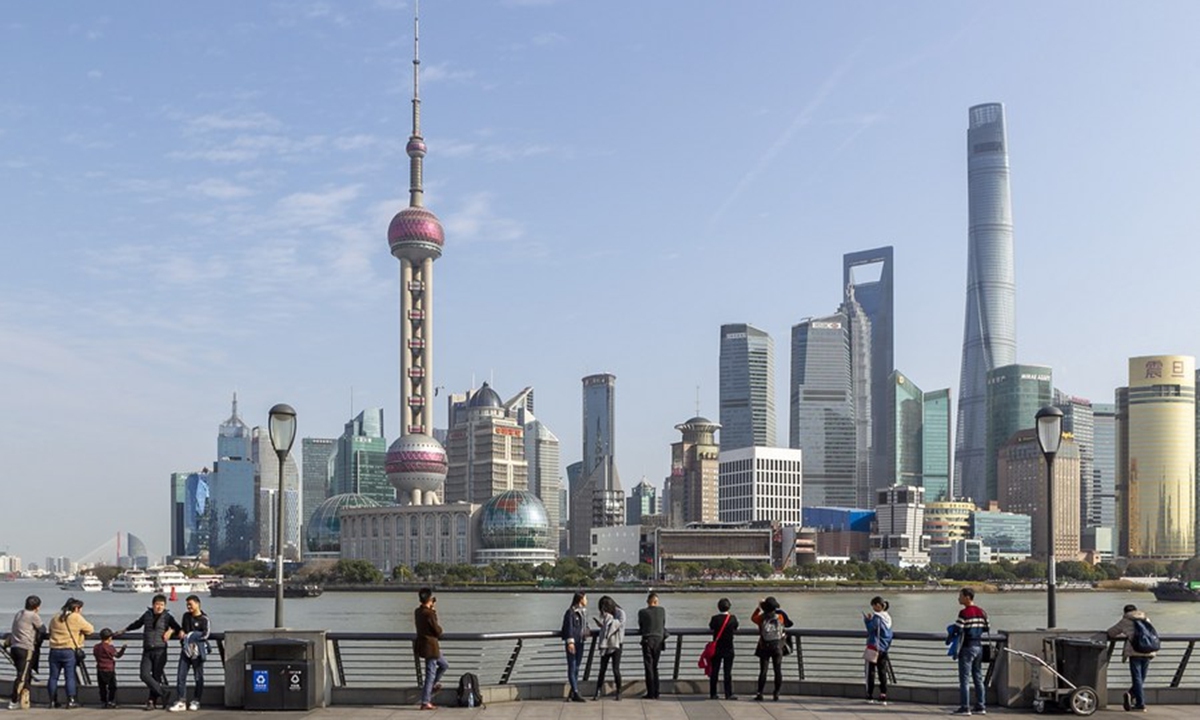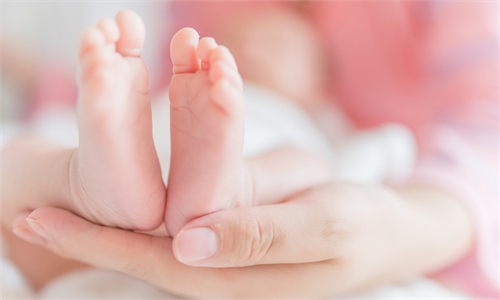Shanghai population reaches 24.87 million; annual growth rate falls to 0.8% from 3.4%

Tourists admire the skyline view of Lujiazui area at the Bund in Shanghai, east China, Jan. 6, 2020. Photo: Xinhua
With a resident population of over 24.87 million, Shanghai has seen steady population growth in the past decade, with the annual growth rate of 0.8 percent, but contrast to the 3.4 percent annual growth rate from 2000 to 2010, Shanghai municipal authorities announced on Tuesday.
As part of the seventh national census, Shanghai's population census is also one of the important factors gauging changes in the size and diversity of the population structure, which will be useful for future economic and social activities plans, especially for city management.
The number of those aged 0-14 reached 2.44 million in Shanghai, accounting for 9.8 percent of the total, up 1.2 percentage points from 2010; meanwhile, the number of those aged over 60 was 5.82 million, accounting for 23.4 percent, up 8.3 percentage points from 2010.
The rate of the population aged 0-14 is based on many factors. The change of age structure in a region is related to "the level of economic and social development," Zhu Min, director of the Shanghai Municipal Bureau of Statistics said during a press conference held in Shanghai on Tuesday.
With continuous development, especially the influence of the "change of the concept of fertility" brought by industrialization and modernization, a "low fertility rate has become a problem" in most developed countries, Zhu said.
Shanghai's gross domestic product totaled 3.8 trillion yuan ($573 billion) in 2019, ranking sixth globally, according to the Development Research Center of the State Council.
Meanwhile, the rate of children under 14 years old coming from other provinces was relatively low, according to Zhu.
Shanghai's high rate of senior citizens has historical reasons. From 1951 to 1960, the number of newborns in Shanghai was 2.72 million, Zhu said, noting that the peak was in 1954, when the total number of births in Shanghai was large and relatively concentrated. This is one of the main reasons for the high degree of population aging at this stage.
However, the proportion of people aged between 60 and 69 accounted for 58.7 percent of the total elderly population in the city, which means this group still has skills, experience, wisdom, and they could play a role in society and their families, according to Zhu.
Shanghai has explored a lot of creative measures to help senior citizens live a colorful and healthy life.
Shanghai's census collected data including the name, ID number, gender, marital status, and education of residents. A total of 6,548 census-taking institutions were created in the city and over 130,000 census takers were organized to record demographic information door-to-door.
What's more, as a metropolis, the city has also introduced many incentives to attract high-end talent from both home and overseas. The city has also seen a rising rate of high-end education, with the number of those with college degrees reaching 8.42 million. The number of college-educated people per 100,000 rose to 33,872 from 21,893 in 2010.


